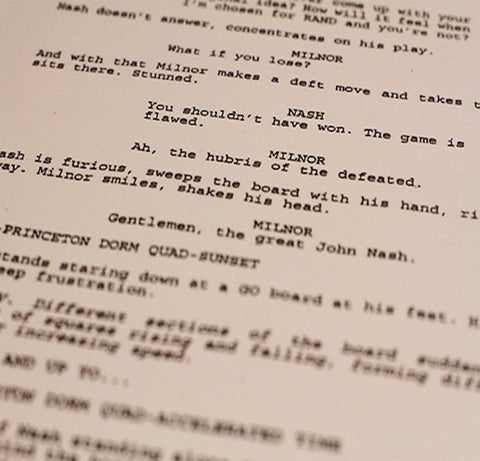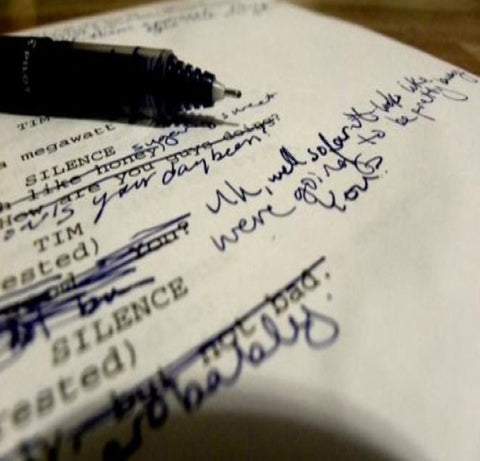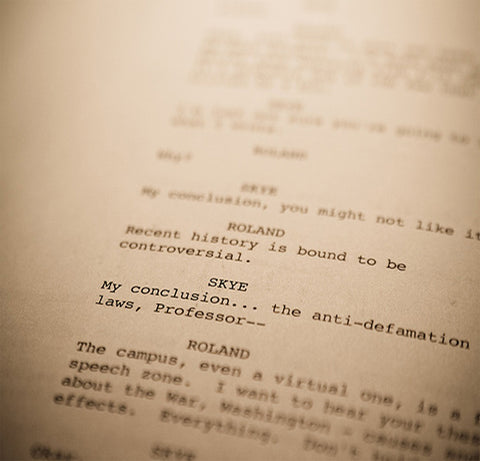
TRACKING THE CHARACTERS
“Tracking” is the term used to describe consistency within character development and behavior within the story. Simply put, it means making sure that the things the characters say and do make sense within the context of the narrative and their established personalities.
Here’s a dumb example: We have a scene in which our protagonist says he hates peanut butter. Then later in the script he’s sitting at a kitchen table using a butter knife to eat peanut butter out of the jar.
We get bumped by the beat because we’re left to think, “Wait, didn’t he say he hates peanut butter back on page 11?” Flip-flip-flip… “Yeah, he does say that. So why is he suddenly eating this peanut butter?” So now what should be a simple, easy beat – a character eats peanut butter – turns into a bump that pulls us from the mental movie of the script. And if the scene makes it into the film, the audience is sitting there wondering, “Huh? Peanut butter?”
The point isn’t the peanut butter. It’s the idea of tracking the concepts, ideas, and facts of the in-movie reality. If we put A on the page, then it can’t suddenly become C. If we want C, then we need B.
Using the above example, let’s say A is our protagonist hating peanut butter. But we want a later scene in which he eats peanut butter – C. To get there, we need a beat that lays track from one thought/concept to the next – a beat that acts as B to connect them. (And yes, I realize we’re using “track” in both meanings: to follow, and as a road for trains).
For instance, we might introduce a scene in which someone asks the protagonist why he doesn’t like peanut butter, and he admits he’s never actually tried it; he just thinks the consistency is weird. So this other person persuades the protagonist into at least trying some… and now we’re at C: the protagonist in the kitchen, eating peanut butter. Now the character beats track.
Now look at what we get from this sequence of beats. We establish with A that our protagonist is the kind of person who makes firm decisions based on incomplete information. (“Peanut butter looks weird so that means I won’t like it.”) From B, we establish that, when called on A, our protagonist is willing to admit his faulty thinking and react accordingly. (“You should at least try peanut butter.” “Yeah, you’re right.”) And from C we see the protagonist will follow through and try something new. (“Hey, peanut butter is actually pretty good!”)
These are the building blocks of character development. We learn something from each of these beats. Each beat brings our character to a new thought, decision, action. At the end, the character is a different person for having encountered these experiences.
Tracking character beats is the way we develop characters, and keep the reader and audience engaged in their story.




